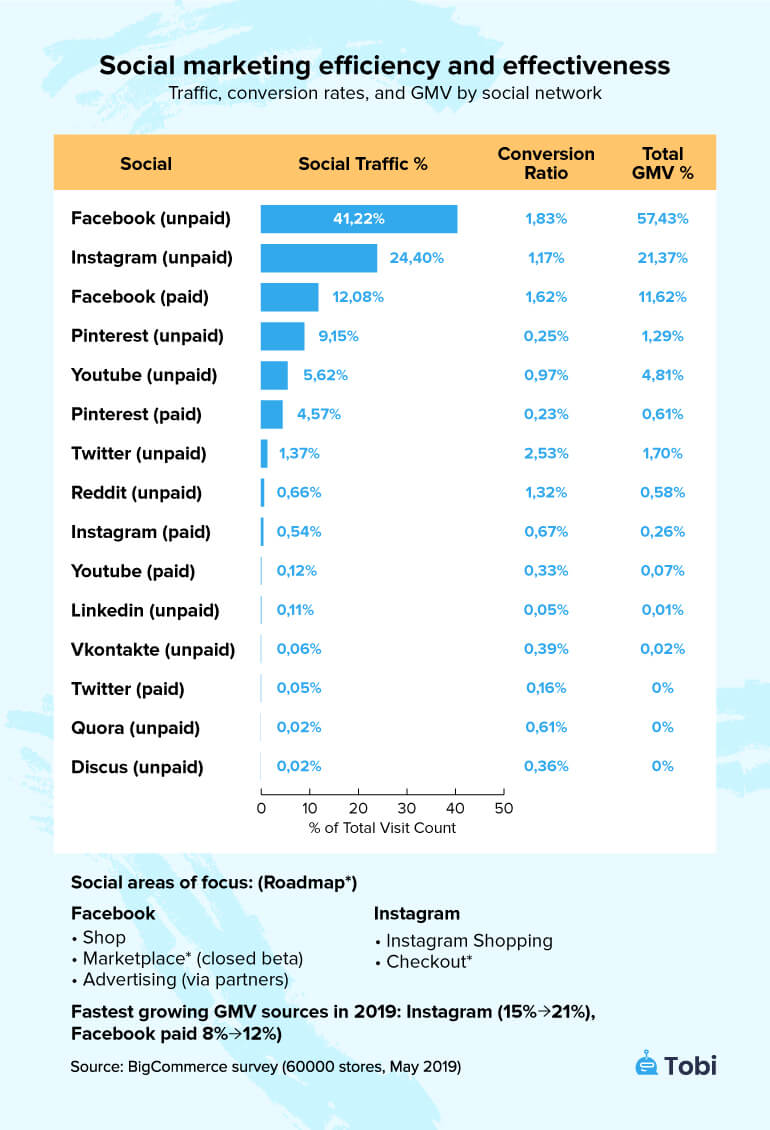Even if you run a brick-and-mortar store, you need an online presence.
If you’re not online, people can’t find you, your customers can’t share about you, and you may as well be invisible.
You don’t need to sell things online – although it helps. Online shopping has become one of the most popular online activities worldwide, with projected global e-retail sales expected to reach $4.8 trillion by 2021.
On the service front, if you’re a restaurant or beauty salon, having a Facebook page will help you share promotions and get some social proof going with reviews and check-ins.
Regardless of what type of brick and mortar store or retail outlet you run, an online presence is more valuable now than ever, to keep up with the competition, control your reputation, and reach customers.
This article covers the main things you’ll need to consider as a starting point for creating an online presence.
Checklist: What a brick-and-mortar store needs for an online presence
1. A fast, mobile-friendly website
Even if you don’t intend to sell online, a basic website is an absolute must so that potential customers can do their research before coming into your store to buy products. Here’s Korean bingsu restaurant Nunsongyee’s website layout, with a mouthwatering splash image.
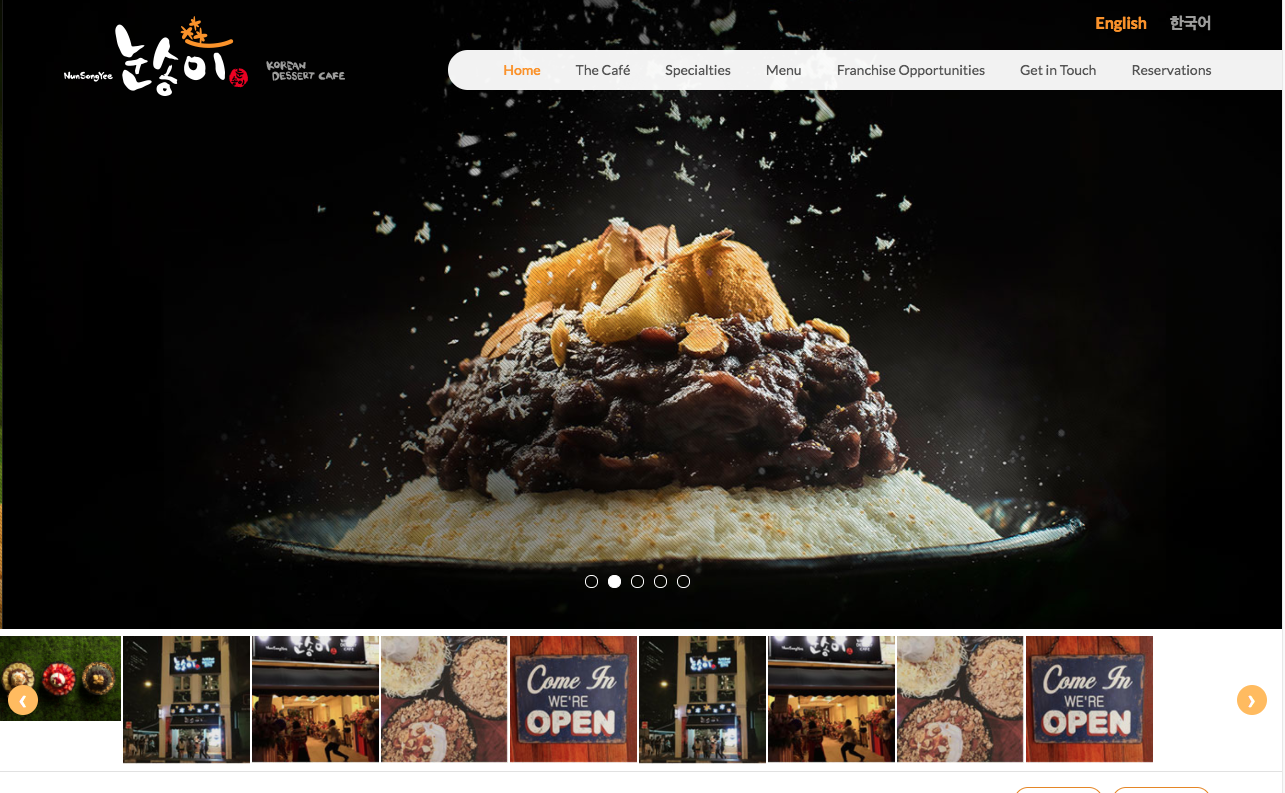
While a beautiful restaurant website is important, they’ve also set up for mobile traffic. Given that more than half of website traffic worldwide comes from mobile, you should ensure that your site design is mobile-friendly – that is, easy to view across smaller devices. This is what their website looks like on mobile.
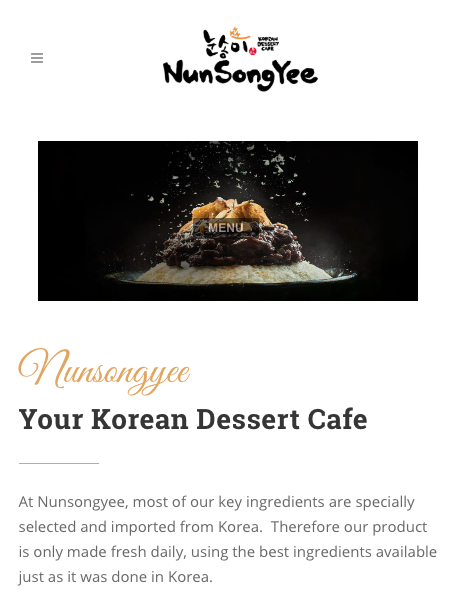
Note the MENU button in the centre of the image – easy to click for mobile.
Search engines give a higher weighting in terms of rankings to websites that are mobile-friendly. They also favor sites that are fast and perform well – as do consumers. In fact, 47% of consumers expect a website to load in two seconds or less!
There’s much you can do to speed up a website, such as enabling browser caching, using a Content Delivery Network (CDN) and reducing the size of your images – an app like TinyIMG can help you with that. It compresses images by up to three quarters and has a built-in WebP converter for those looking for further image optimization.
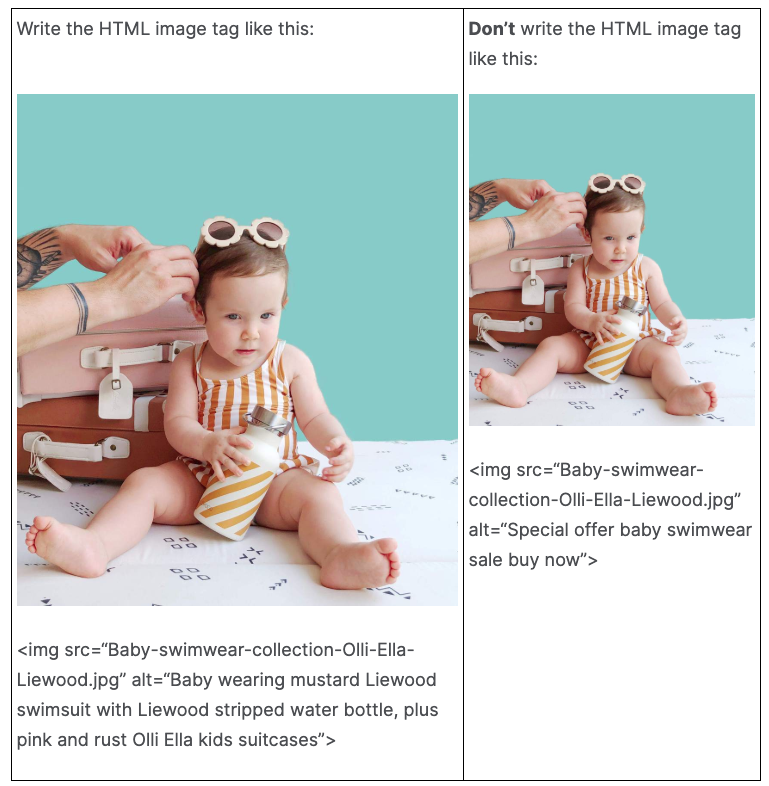
See Also: TinyIMG’s guide for Optimizing Images
2. Product details, including Photos & Visuals
As a minimum, you should include the different types of products you sell (or services you offer) in your stores. Even better if you can prepare a some effective product descriptions, especially of your bestsellers, to excite your customers.
Images are essential; they can add the wow factor to your overall site design, drawing visitors in and keeping them engaged. As well as making sure your images are sized appropriately for the web, you should assign relevant alt tags (alternative text) and filenames to them. These are image attributes that search engines bots look at when crawling a website, and help your customers find you when they’re Googling. Here, cold-pressed juice outlet Mission Juice is in the top few search results for images.
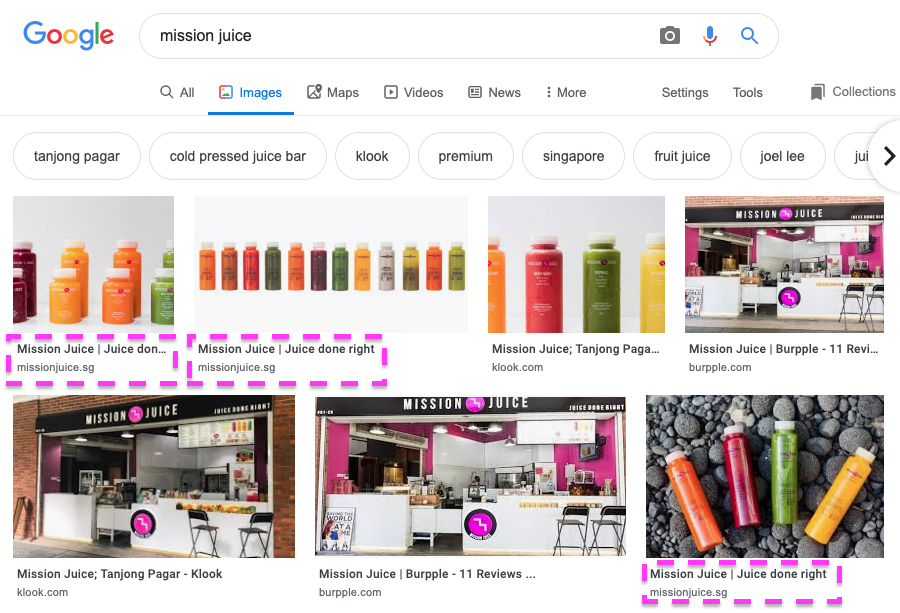
MissionJuice.sg ranks high in image search.
An alt tag is simply a line of text that describes the content of your image and an image filename is the name you give to your image when uploading it to your website. By being as descriptive as possible with these attributes, you can increase your chances of your images appearing in search engine results.
3. A Blog for Updates & Information.
You can start a blog to keep your customers updated about new products or special offers, to provide tips on how to use your products, to report on industry trends, to answer frequently asked questions, or post customer photos to showcase your products in action. As an example, sneaker laundry Shoe Mo uses their blog to share about new outlets, new service offerings and even answer common questions in the three languages their customers use.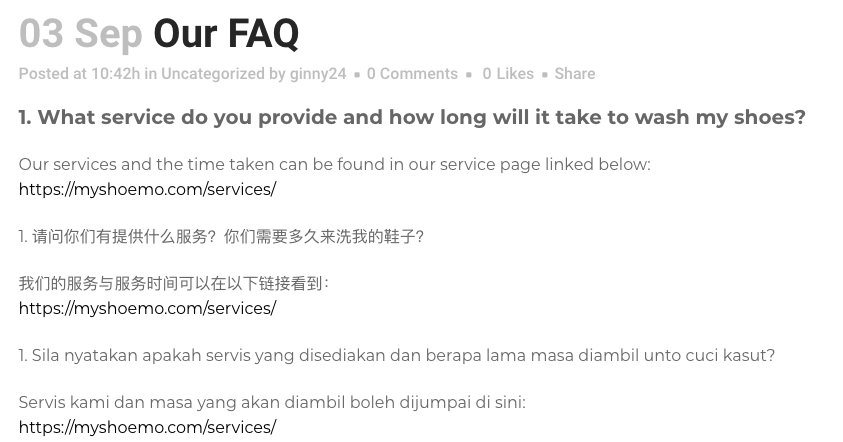
Shoe Mo started out as a side hustle, and now operates in four countries
By regularly updating your blog, search engines will be able to recognize that your site is active and has fresh content, which is another factor they take into account when ranking webpages.
As an additional bonus, most modern blogs allow you to turn blog updates into email marketing updates to customers, creating a new channel to create customer engagement. Collecting customer emails is relatively simple if you have a customer loyalty program, or if you install a simple email capture popup.
4. Product Reviews & Customer Testimonials
Having a place on your website for potential customers to read reviews left by previous buyers is of paramount importance. Reviews can help you build social proof and establish trust. Even critical reviews are helpful, providing you respond to them quickly and in a way that solves the problem for the reviewer.
5. Contact information (and Address!)
Finally, you should make sure your contact details are included on your website and they’re always up to date. Some customers will prefer to call you, some will rather email or use a contact form, and some will like to send you a message via social media, so it’s best to cover all these communication channels.
Bonus: Develop an engaging social media presence
Love it or hate it, social media matters. 3.48 billion people use social media, an eye-watering figure that’s up 9% compared to last year. Brands are embracing social marketing and consumers are taking to social media to interact with brands and research new products.

Paperandpop are a small business with a successful instagram account
If you don’t have a social media presence at the moment, it’s best to start with a couple of channels and see if they suit your retail business. What works for one store might not work for another. It’s worth noting that Facebook is one of the most used channels, however, with 2.32 billion active monthly users, so this platform is a good starting point.
As this infographic shows below, Facebook is leading the way when it comes to social marketing efficiency, traffic, and conversions. More than 40% of e-commerce website traffic comes directly from Facebook – and this statistic reflects organic traffic, not paid. Instagram is the next highest converting social channel, followed by Facebook paid advertising.
So how exactly should you develop an engaging social media presence? Firstly, you’ll have to be consistent in how often you post and start attracting followers. Post interesting and informative content, not just about your products, but also insights and tips from your industry, inspirational quotes and funny memes. You can also look for social media tools to help make creating, scheduling and posting content easy for you.
As a brick and mortar retail business, you should focus on attracting followers who live locally, so that you can invite them to your store. Utilize hashtags, ask questions, answer questions, join in with relevant conversations and contribute to trending topics. Over time, your social media presence will grow and so will your community of followers that are interested in what you have to offer them.
Bonus: Make Your Business Easy to Google
Another advantage of creating links between your social media and your website is that it improves the likelihood of your customers finding your website on Google. Customers will make use of Google and other Search Engines to find all sorts of details about your business: opening hours, contact details, prices and so forth.
The art of getting discovered by Google is complicated and referred to as ‘Search Engine Optimization’, or SEO. It’s a fairly complicated subject (which is why we’ve linked to our ReferralCandy guide to SEO, but the good news is, you don’t have to compete with the rest of the internet.
Google and other Search Engines try to show the most relevant results to users. One factor they consider is location; if someone is looking for a restaurant or a store, they’re most likely for somewhere near them, rather than in another country. Simple touches like having clear contact details and addresses on your webpage can be enough to bump up your local SEO, meaning that potential customers searching near you can find you.
An online presence matters for brick and mortar stores
Even if you don’t want to sell online, it’s crucial to have a presence of sorts online. You can achieve this through a fast, informative, well-designed website and by hanging out on social media, where you can find new prospects and converse with existing customers.
If you decide you want to sell online in the future, you’ll have created a foundation upon which you can build by adding e-commerce functionality to your website. Then you could start promoting your multi-channel sales approach to your social media community.
This guestpost was shared by Firepush, an omnichannel marketing app for Shopify stores.


